November 09, 2023
In 2009, South Africa became the first African country to introduce a vaccine called PCV7 to its national immunization program. PCV7 stands for pneumococcal conjugate vaccine, which targets seven different strains of the Streptococcus pneumoniae bacterium that can cause sinus and ear infections, as well as more serious conditions like pneumonia and bloodstream infections. The PCV vaccine had a tremendous impact in South Africa, and the incidence of resistant pneumococcal infections in HIV-uninfected children under two dropped by over 80%. Since then, new iterations of PCV have been produced, which target additional strains of S. pneumoniae, preventing even more infections. Despite the clear link between vaccination and a reduction in drug resistance, the issue of drug resistance is rarely part of the conversation on immunization. Teams from One Health Trust and the University of Cape Town organized a workshop in Cape Town, South Africa, to address this issue.
On October 11, 2023, the Global Antibiotic Resistance Partnership – South Africa (GARP-SA) working group met for an in-person workshop in Cape Town. Dr. Erta Kalanxhi, OHT Fellow and Director of Partnerships, and I (Isabella Impalli, OHT Research Analyst) attended the event. The GARP network, spanning 15 countries in Africa and Asia, was created by One Health Trust in 2008 – then the Center for Disease Dynamics, Economics, and Policy (CDDEP) – to enable country-led strategies and policies for antimicrobial resistance (AMR) mitigation. AMR develops as disease-causing microbes evolve to become resistant to treatment, threatening the efficacy of current therapies and increasing the number of infections and deaths.
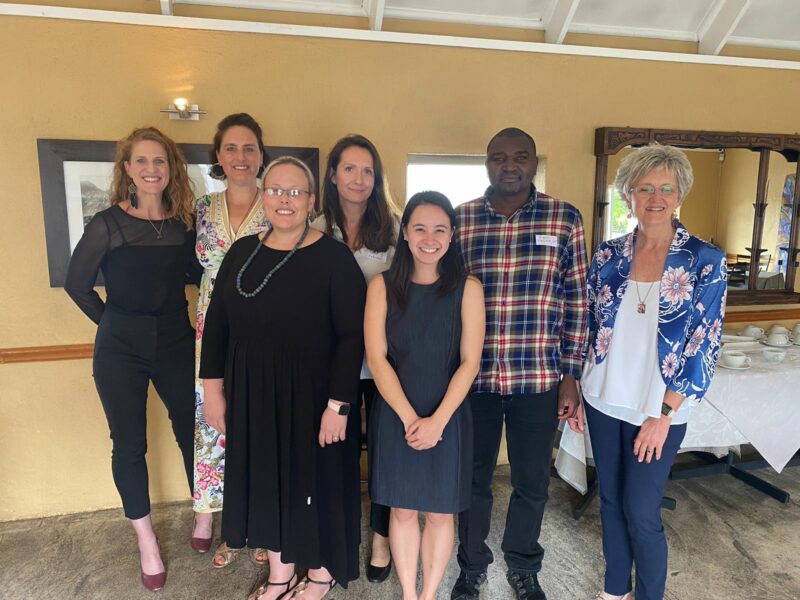
Although AMR is a global health issue, it disproportionately affects low- and middle-income countries (LMICs), many in Africa and Asia; therefore, combatting this global health crisis requires context-specific interventions. Having previously facilitated the successful development of various national action plans and roadmaps for their implementation, GARP’s work is presently focused on bringing awareness to AMR-mitigation and prevention strategies with a One Health focus, namely, immunization; infection prevention control; and water, sanitation, and hygiene (WASH).
The workshop in GARP-SA aimed to convene AMR and immunization leaders to bring awareness to the vital role that vaccines play in fighting drug resistance. As a budding scientist, I was honored to be included in such an accomplished, renowned, and inspiring group of academics, scientists, policymakers, clinicians, and pharmacists, all stakeholders in the fight against AMR. Workshop attendees included GARP-SA Chair Dr. Adrian Brink, GARP-SA Coordinator Dr. Elloise du Toit, Dr. Sipho Dlamini, and Dr. Benjamin Kagina from the University of Cape Town; Dr. Sabiha Essack and Dr. Yogandree Ramsamy from the University of KwaZulu-Natal; Dr. Charles Feldman and Denasha Reddy from the University of Witwatersrand; Dr. Natalie Shellack and Dr. Alfred Kgasi from the University of Pretoria, Dr. Hannelie Meyer, Dr. Phumzile Skosana, Dr. Mncengeli Sibanda, and Dr. Andrew Musyoki from Sefako Makgatho Health Sciences University; and Marione Schonfeldt from the National Department of Health. Dr. Suzanne Nzenze from the University of the Witwatersrand attended virtually.
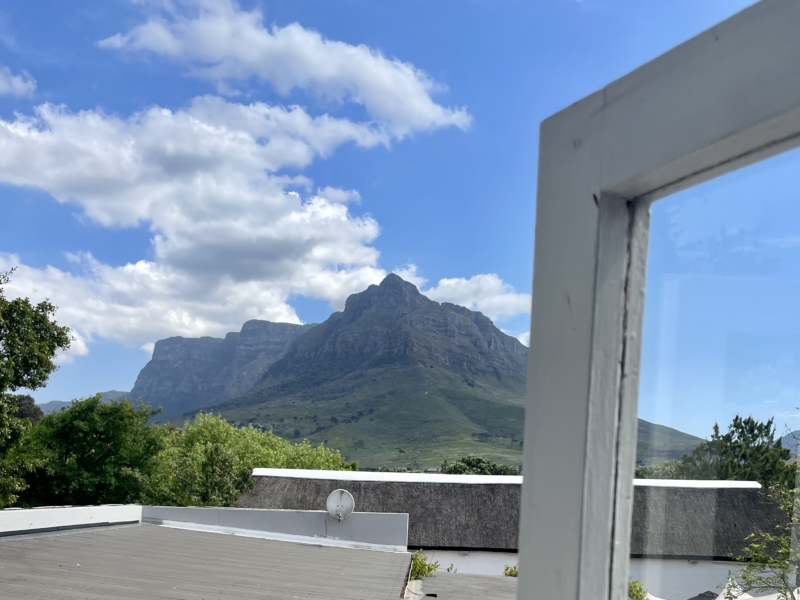
The event kicked off in Cape Town on Tuesday, October 10, where a welcome dinner was held at the conference venue. We enjoyed a gorgeous view of Table Mountain at the workshop the following day outside the conference room window. Dr. Adrian Brink commenced the session by discussing the connection between AMR and immunization. The day included seven presentations on various topics related to AMR, immunization, and One Health, interweaved with lively discussions. The group’s collective efforts benefited from the interdisciplinary cohort in attendance. For example, many in the group were surprised to learn that South Africa spends a large portion of its adult immunization budget on the rabies vaccine. This point led to an interesting discussion about whether immunizing animals for rabies should be a bigger focus so that the human immunization budget can be directed toward other human vaccines. Each working group member brought a different perspective on what barriers and facilitators to AMR-immunization collaboration exist in their area of expertise. Presentations included a situational analysis of the current national immunization program and budget; case studies of important AMR pathogens; mathematical modeling data to show the current and potential impact of immunization on AMR mitigation; the importance of vaccinations for adults and the elderly; and an overview of NISH, the support hub for national immunization technical advisory groups (NITAGs) in Africa.
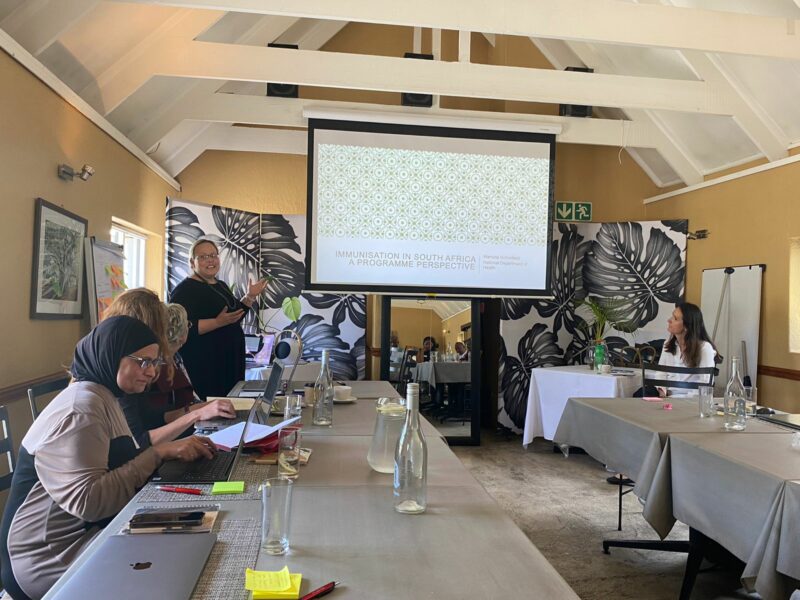
The workshop ended with an interactive wrap-up session led by Dr. Sabiha Essack, reflecting on the facilitators and barriers to AMR-immunization collaborations. The group identified that immunization and AMR departments often fail to collaborate due to structural and political barriers. For example, these groups do not necessarily work in the same buildings at the academic and government levels, which is emblematic of the larger problem. It was noted that the effectiveness of vaccination as an AMR mitigation strategy is poorly understood among most stakeholders. The physicians and pharmacists in the group were able to speak to the potential changes that could be made during medical training to highlight the important impact of vaccination on drug resistance. A recent study shows that a post-exposure TB vaccine has the potential to avert nearly seven percent of drug-resistant tuberculosis deaths in South Africa; however, despite a robust childhood immunization program, vaccine hesitancy among the adult population, particularly after the COVID-19 pandemic, is high. The group discussed the role of science communication and the media in reducing this hesitancy, as well as the importance of including drug resistance in the economic case for vaccines to support the government in its decision-making process for vaccine investments.
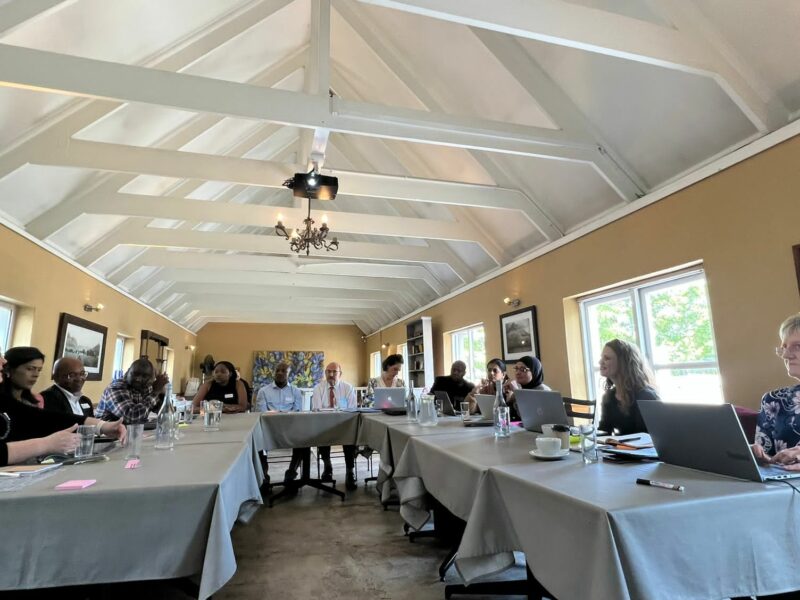
This workshop was my first trip to South Africa, so I was eager to learn more about the history, culture, and landscape of the country through conversations with the working group members. While the workshop taught me a lot of technical information about immunization, it also showed me how important it is that health policy endeavors, even if facilitated by a global organization like OHT, are spearheaded locally. Each country has unique political, cultural, and healthcare nuances and socioeconomic realities that make local expertise critical. The passion injected into the workshop by each group member was inspirational. I am excited and proud to continue working on GARP in other countries. The GARP-SA coordinator, Dr. Elloise du Toit, managed all the complex logistical aspects of the conference amazingly. The organization was a massive undertaking, and everything down to the smallest details was carefully considered and executed.
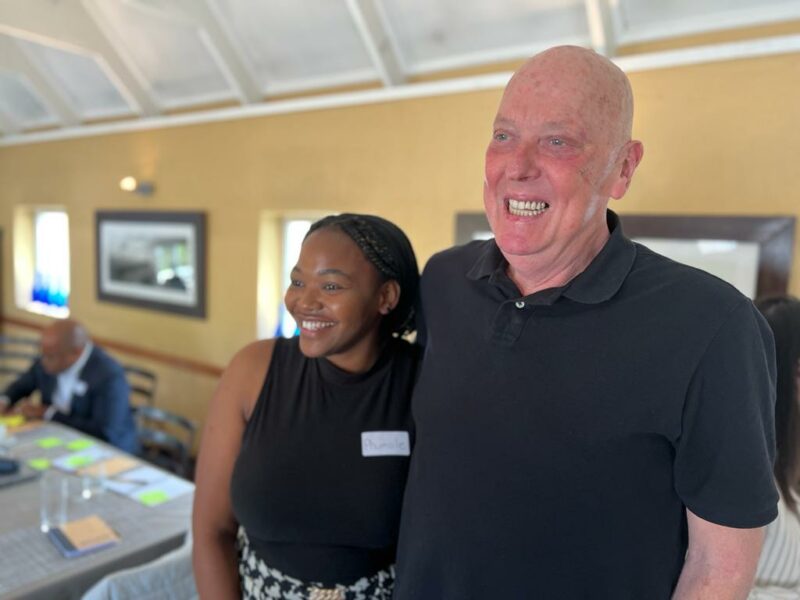
GARP-SA is an extraordinary and diverse group of researchers, physician-scientists, pharmacists, veterinarians, and policy specialists, which allowed for comprehensive discussions that were seemingly only limited by the time constraints of the workshop. We left the event looking forward to advancing science to improve health and promoting meaningful policy change. The workshop was indispensable in forging connections across health fields and formulating a game plan that highlights the vital role of vaccines as both a short- and long-term solution to controlling AMR.
Edited by Samantha Serrano











